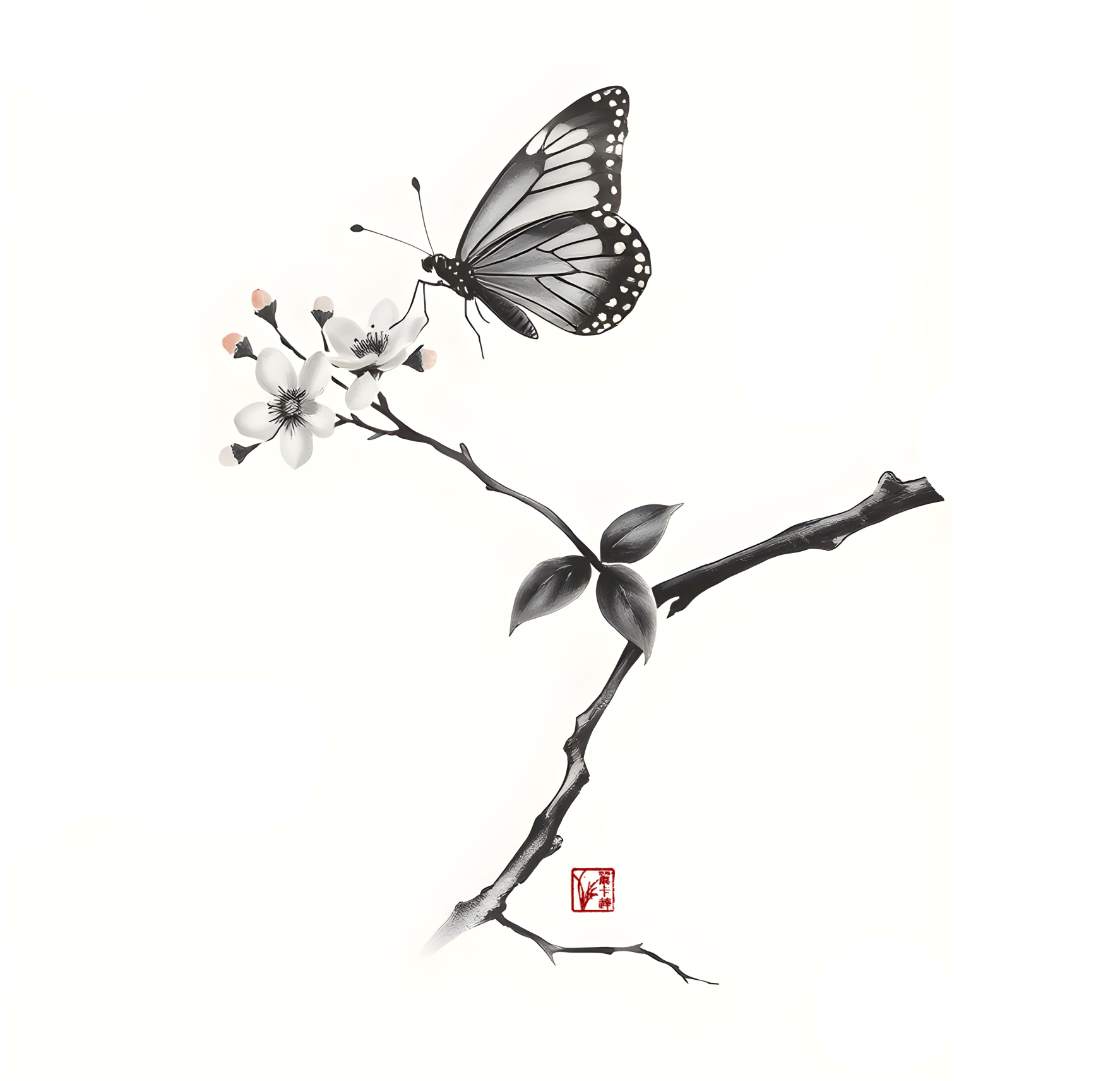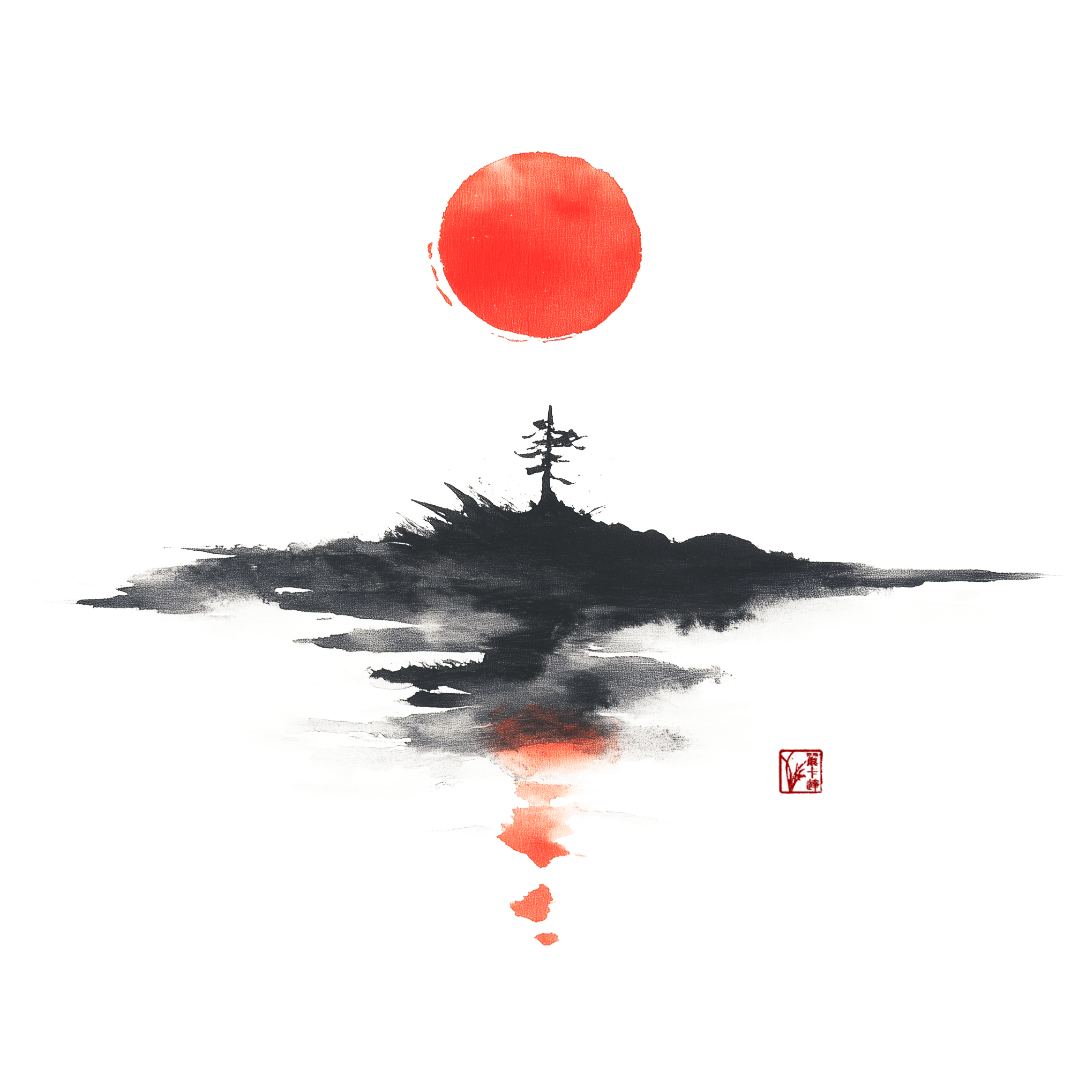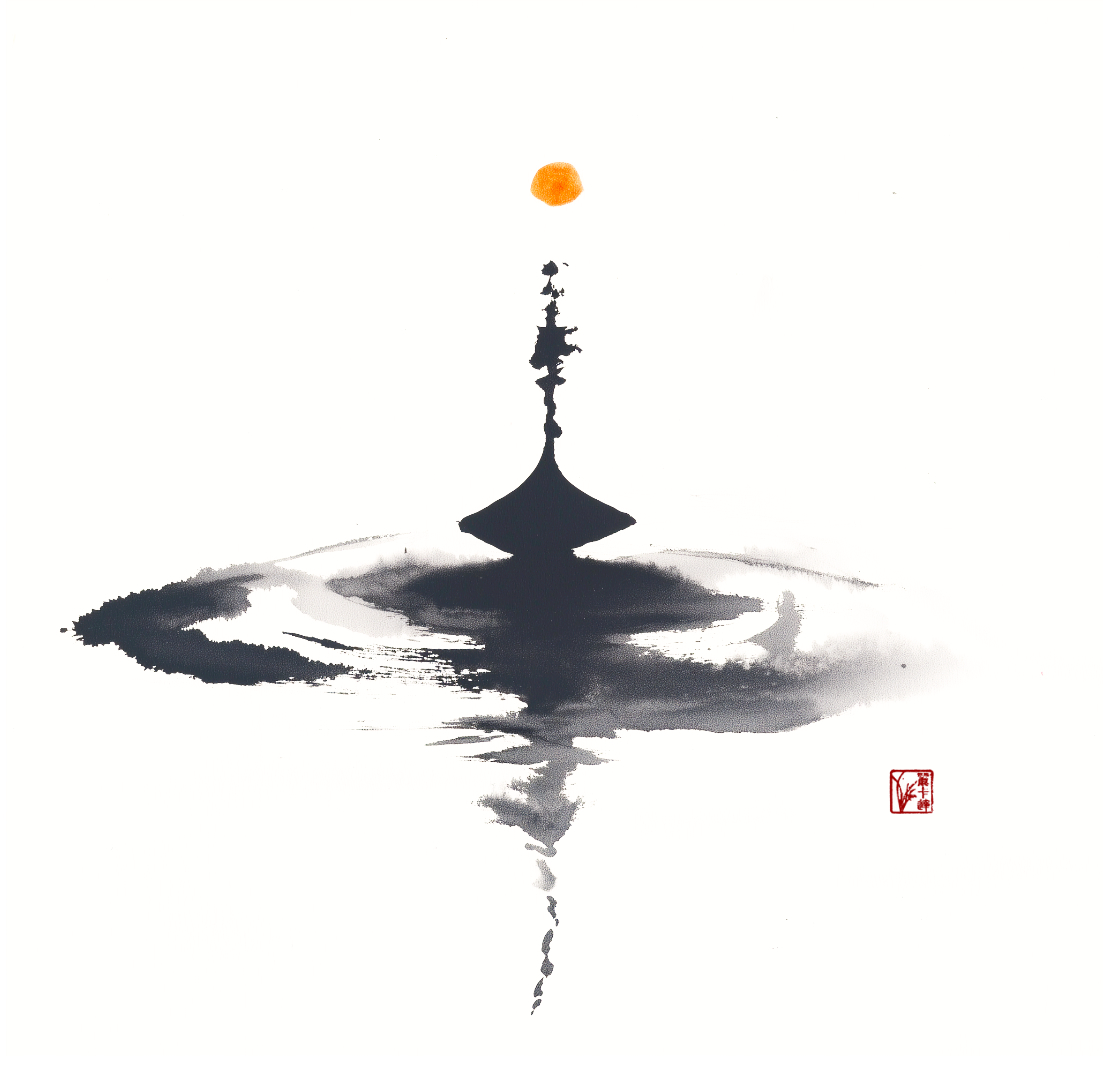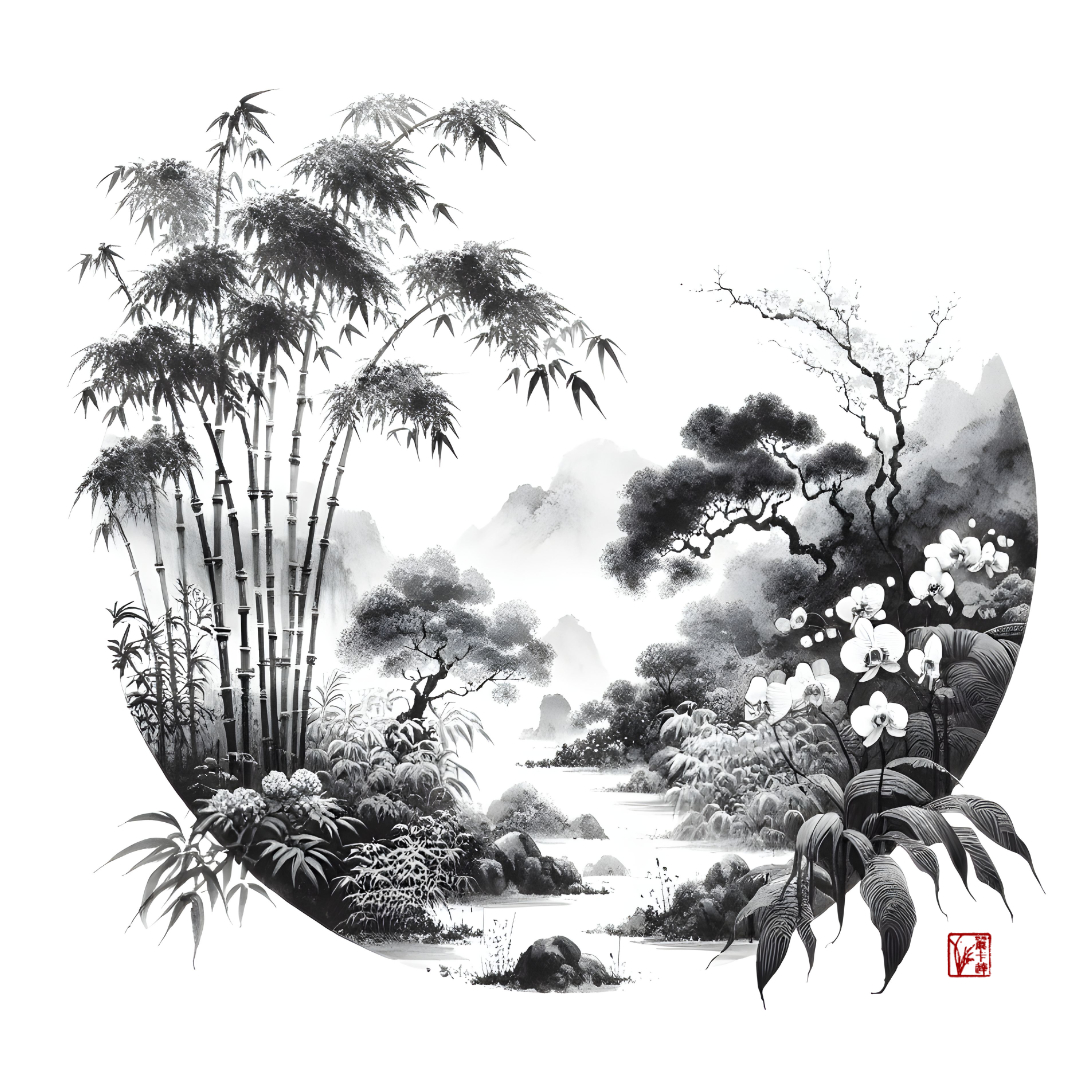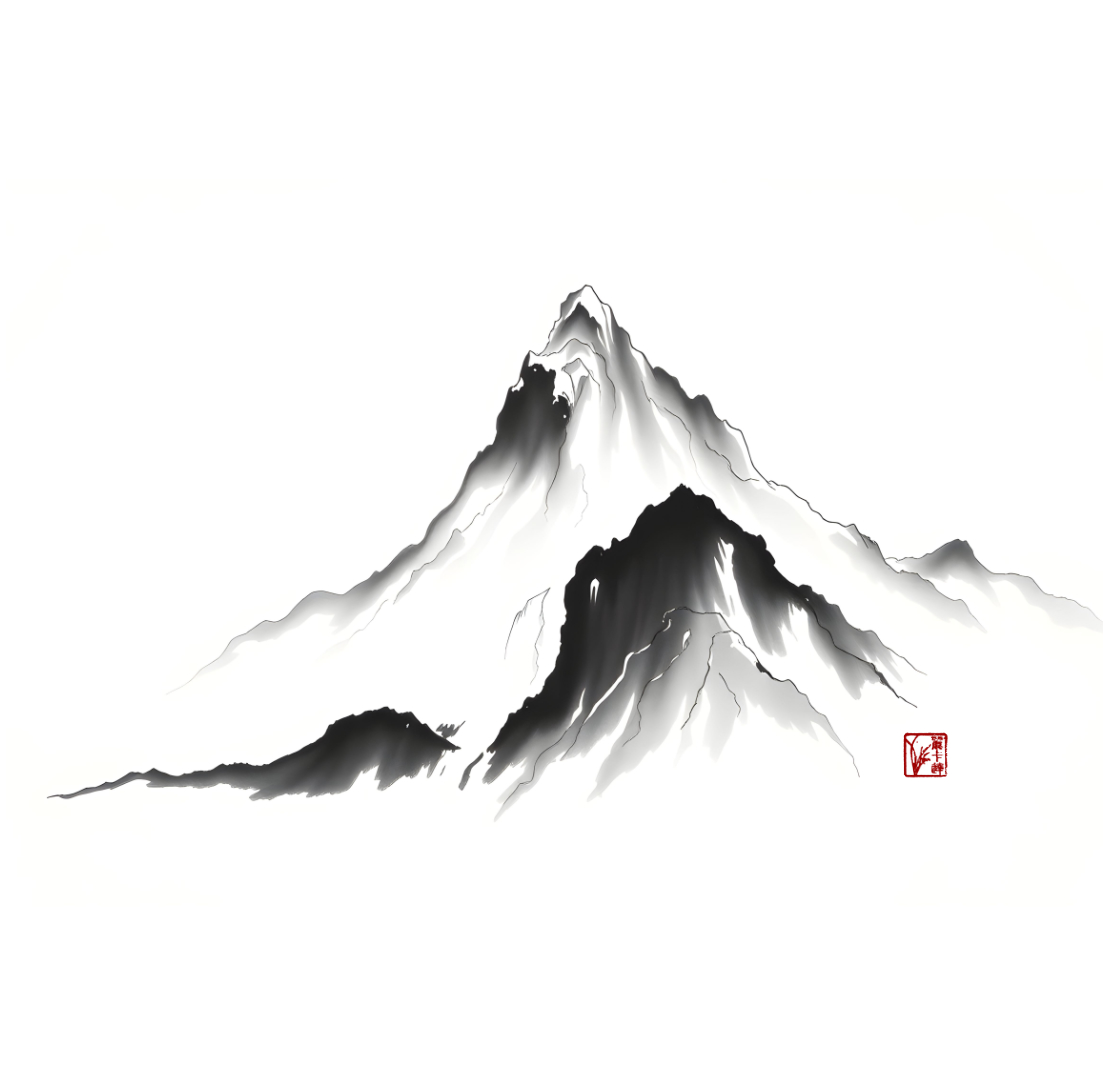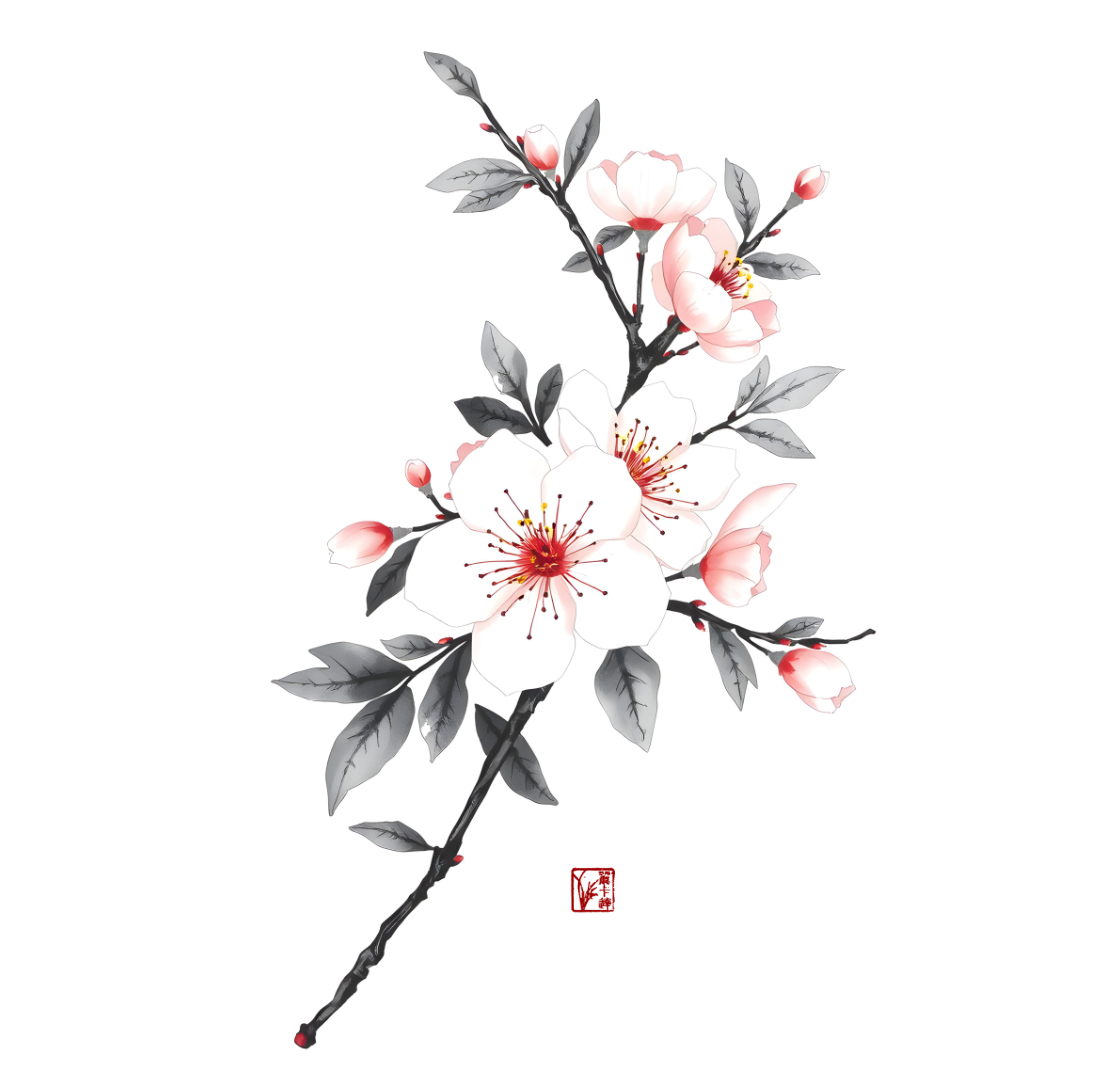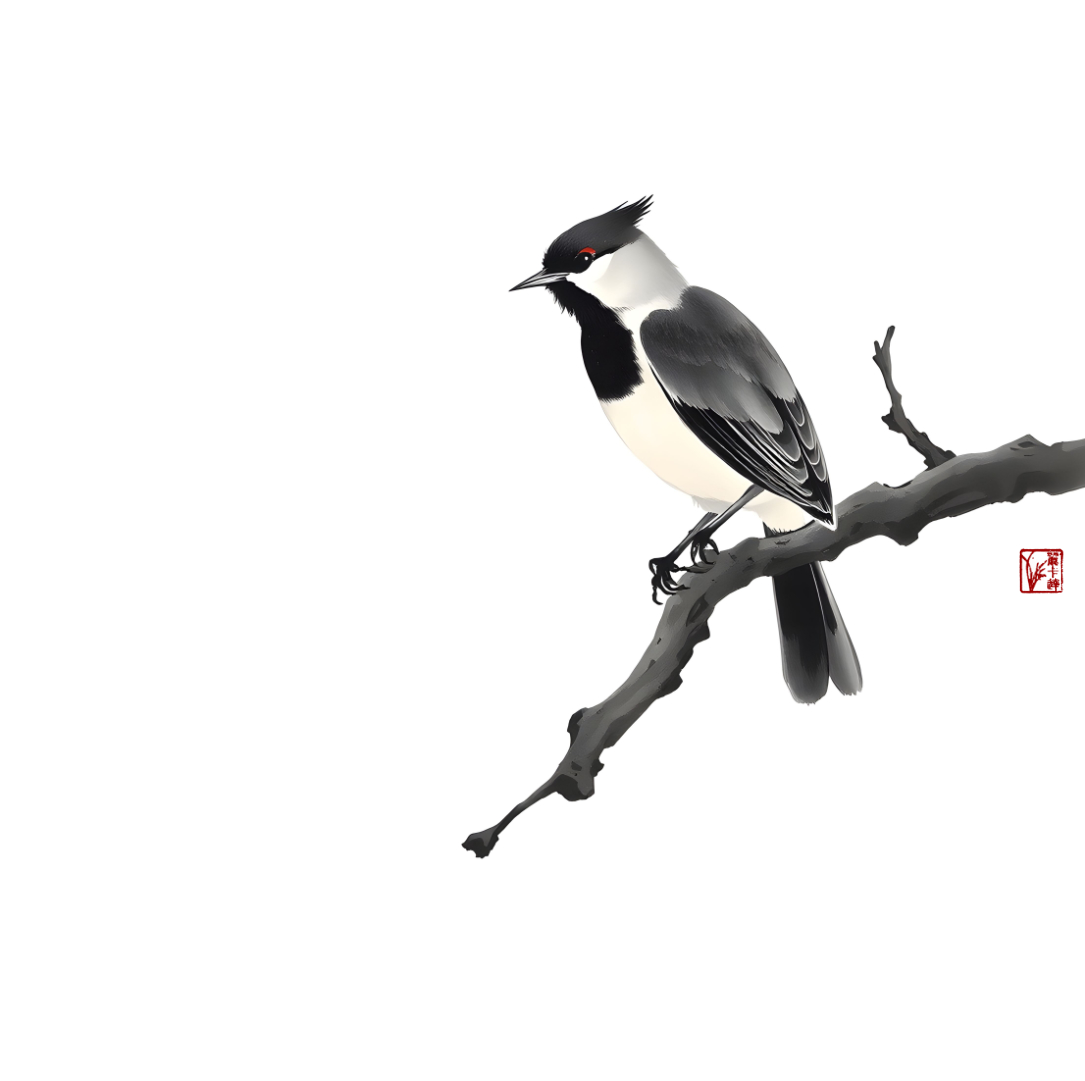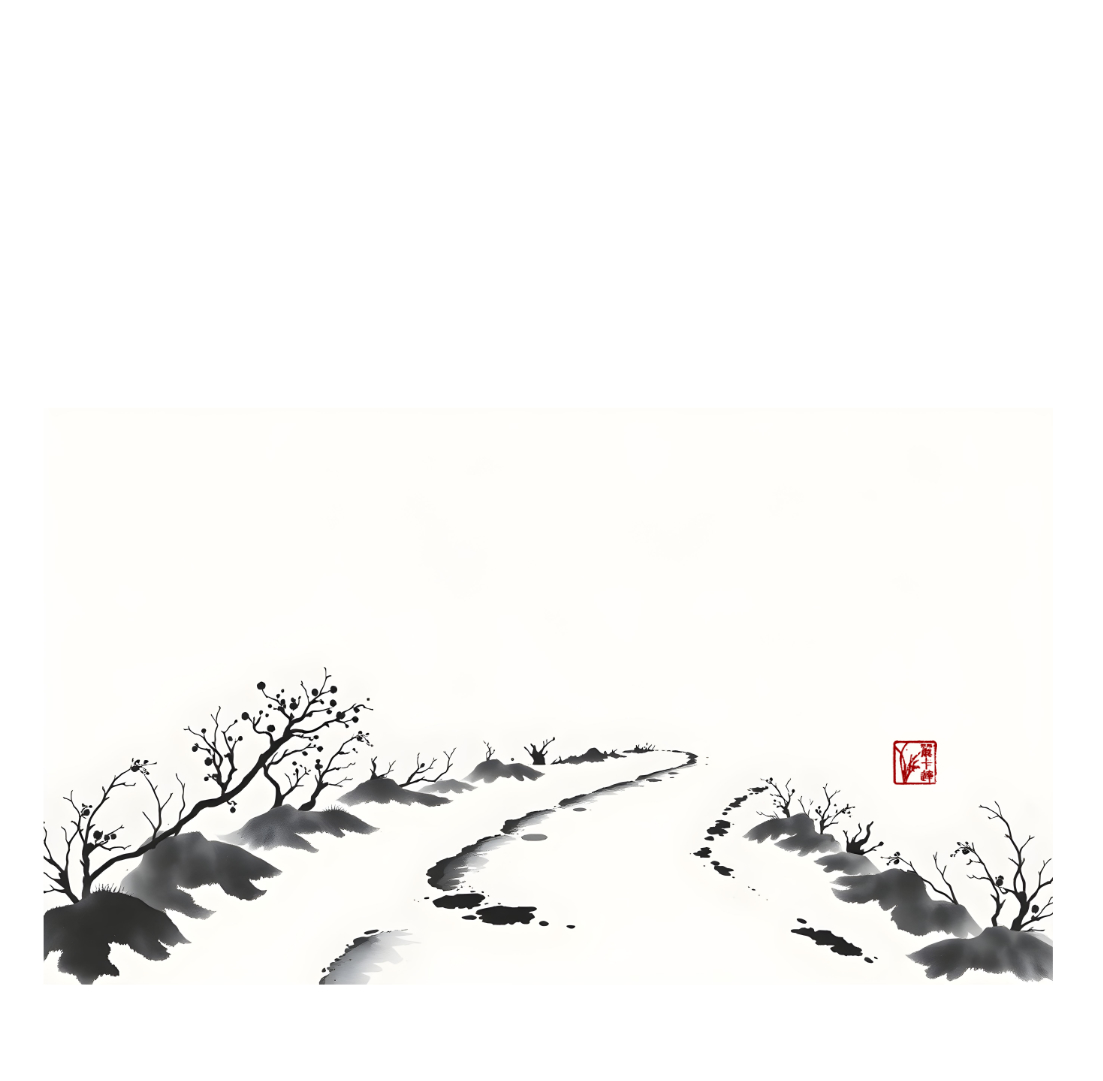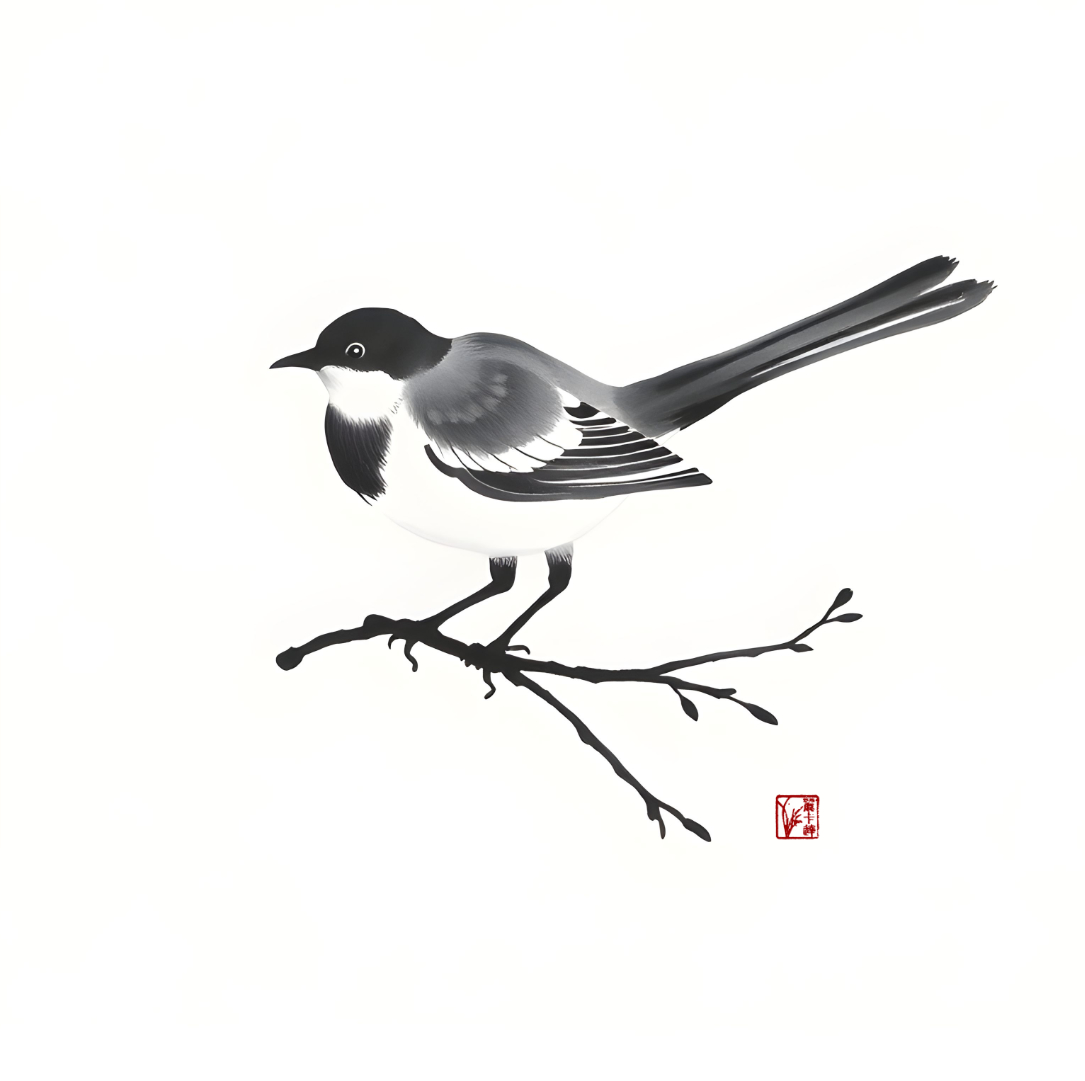The path narrows as I climb, a ribbon of earth stitched between weathered stones and low scrub. Each step rises a little higher, and with each breath the air thins and tastes of snow even in late autumn. The village below becomes a patchwork of roofs and smoke, then a memory. Above, the mountain opens its wide shoulder, patient and indifferent to my hurry.
I move slowly on purpose – not from fatigue, but to let the place teach me its pace. The sun is low, gilding lichen and granite, and every footfall seems to set a small bell ringing inside me. Wind comes and goes like a visiting thought. Once, when a gust stirs, a scatter of dry leaves spins across the trail and then settles as though nothing much has happened. The world, I begin to notice, carries its events without panic.
Near the ridge I find a small stone shelter, half-hidden beneath a stand of pines. Smoke threads from a narrow chimney and the smell of steeped tea drifts to meet me. A monk sits on a flat rock just outside the shelter, wrapped in a simple robe. He does not rise when I approach; instead he inclines his head and gestures to the space beside him. “Sit,” he says. His voice is the color of the mountain – low, steady, without hurry.
I sit. We are both quiet for a long time. The only sounds are a distant raven calling and the slow creak of a pine branch. In that absence of busy noise, I find the mind unclenching like a fist opening. It is a silence that is not empty – rather it is full of small presences: the moss on the stone, the way the light has pooled in a hollow, the faint pulse at the temple of my ear. The monk watches me, and there is a warmth in the watchfulness that feels less like scrutiny than like welcome.
After some time he speaks again. “Many come to mountains seeking answers,” he says, “but they bring their questions like torches, demanding revelation. The mountain does not reveal by command.” He taps the rock beside his knee – a gentle sound, a punctuation. “It reveals by presence – by the way you stand with it. This is the work.”
I look at him, at the rock, at the slope that falls away, and I understand that presence is not just sitting still. It is an orientation – a letting go of the small urgencies that make the heart quick and the thoughts loud. “How do you become like the mountain?” I ask.
He folds his hands into his robe and smiles as if the question itself is a kind of offering. “You begin by listening. Not with your ears only – with your bones, with your breath. There is a practice we call zhan zhuang – to stand like a tree, like a mountain – to receive the wind rather than fight it. When you stand, do not brace against life. Allow it to pass through you, and you will not be moved easily.”
He rises and stands before me. His posture is simple: feet rooted, knees soft, spine like a column of quiet. In that stance he seems at once unremarkable and utterly anchored. “Feel the ground,” he whispers. “Not as an idea, but as a contact. Let the weight of your body settle until it is shared by rock and root. That is the base of peace.”
I attempt the stance. At first my legs tremble and my thoughts leap like startled birds. But the mountain has time. Minutes sink into one another and a strange steadiness spreads through me – small as a seed at first, then widening. The tremor fades. The wind continues its passing, but it becomes an event observed rather than an invitation to scurry.
The monk pours tea into two small cups and hands me one. The tea is warm at the rims and bitter in a way that tastes like honesty. “Strength that seeks only to be strong becomes brittle,” he says. “Softness that fears strength will be trampled. The mountain is both – solid underfoot, and yet it yields the path for a stream to glide through. Balance is the art.”
We talk until the light narrows to a thin strip along the horizon. He tells stories of winters that taught patience, of storms that passed leaving new lines carved into the rock. He speaks of the foolishness of speed and the quiet dignity of staying put when all around trembles.
When I stand to leave he places a small piece of paper in my palm – a single character written in careful ink: 空 – emptiness. “Not nothing,” he says, “but space enough for what wants to come. Carry it as a meditation, not a slogan.” The word rests warm in my hand like a small promise.
I walk down as twilight thickens, the air cooling, and the village lights begin to flare one by one. The silence of the mountain has not followed me like a cloak – it has taught me a shape. My steps are the same as before, yet somehow lighter. Where once I hurried to answers, I now carry a patience like a pocket of sun – a place to warm whatever comes next.


